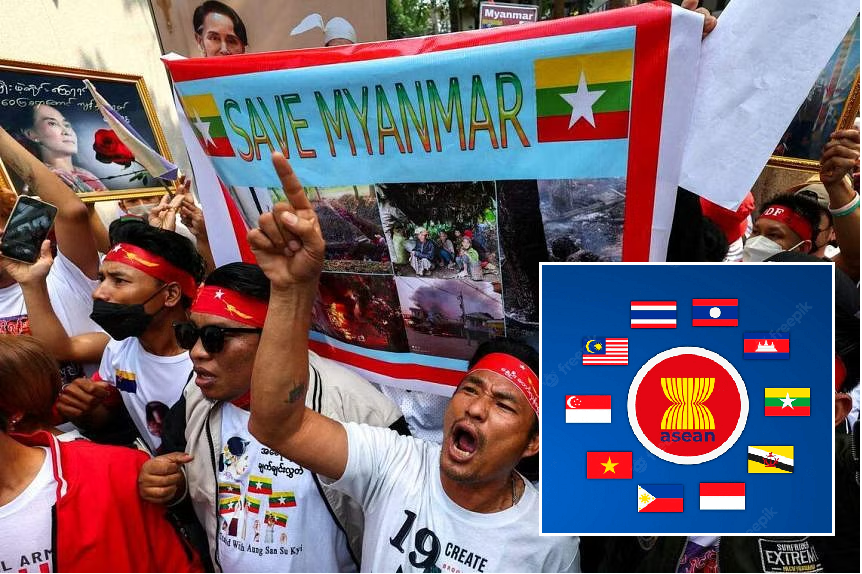
- ASEAN’s response to the Myanmar crisis reflects internal tensions and conflicting national interests.
- ASEAN’s divided stance during the UN resolution for an arms embargo on Myanmar in 2021 highlighted internal discord.
- The evolving crisis requires a comprehensive approach, pushing for inclusive dialogues and pushing Myanmar’s military towards stability and peace.
The persistent political and socio-economic turmoil in Myanmar, stemming from the military coup in February 2021, has posed a formidable challenge to the unity and credibility of the Association of South East Asian Nations (ASEAN). Despite the military’s initial anticipation of quelling opposition forces and orchestrating new elections, robust resistance from both opposition factions and Ethnic Armed Organisations has thwarted these plans.
ASEAN stepped into the forefront post-coup, introducing the Five Point Consensus (FPC) to restore normalcy. However, international recognition for its efforts contrasts sharply with the challenges faced due to Myanmar generals’ reluctance to commit to FPC implementation and internal disagreements within the ASEAN grouping.
As Indonesia hands over the ASEAN chairmanship to Laos in 2024, this analysis reflects on ASEAN’s role in navigating the Myanmar crisis, evaluating progress under Indonesia’s leadership, and examining responses from other member states such as Brunei, Cambodia, Malaysia, Singapore, and notably, Thailand.
Under the chairmanship of Brunei and Cambodia, ASEAN grappled with FPC implementation. While diplomatic efforts were made, special envoys faced obstacles, and the exclusion of Min Aung Hlaing from ASEAN summits marked a symbolic stand. Cambodia’s engagement, while limited in breakthroughs, opened a window for dialogue.
Notably, ASEAN’s divided stance during the UN resolution for an arms embargo on Myanmar in July 2021 highlighted internal discord. Yet, the bloc took measures to pressure the military, barring Myanmar’s representation in certain meetings, revealing the internal struggle to form a unified front.
As Indonesia assumed the chairmanship, efforts to restore democracy unfolded. Special envoy Marsudi engaged extensively, yet signs of a divided ASEAN persisted. The troika system, involving Indonesia, Malaysia, and Laos, emerged to address the crisis collectively. However, the Myanmar military’s rejection of ASEAN’s statements indicates ongoing challenges.
Member states like Malaysia and Singapore took principled stands, urging pressure on the military, while Thailand’s engagements outside ASEAN’s framework added complexity. Thailand’s consultative dialogues and meetings with Myanmar military representatives raised questions about ASEAN’s collective approach.
The recent ASEAN Summit reaffirmed commitments to FPC but exposed divisions. The denial of Myanmar’s presidency in 2026 and the introduction of a troika system indicate a desire for a unified stance. Yet, the effectiveness of this approach remains uncertain.
In conclusion, ASEAN’s response to the Myanmar crisis reflects internal tensions and conflicting national interests. The troika system signals a step toward cohesion, but challenges persist. ASEAN’s responsibility extends beyond political dialogue to providing humanitarian assistance. As Laos assumes the chair, the evolving crisis requires a comprehensive approach, pushing for inclusive dialogues and pushing Myanmar’s military towards stability and peace.
(Srijan Kumar is currently pursuing a PhD in South Asian studies from Delhi University. He is a writer and a columnist for various digital media houses. Opinions expressed are the author’s own)
